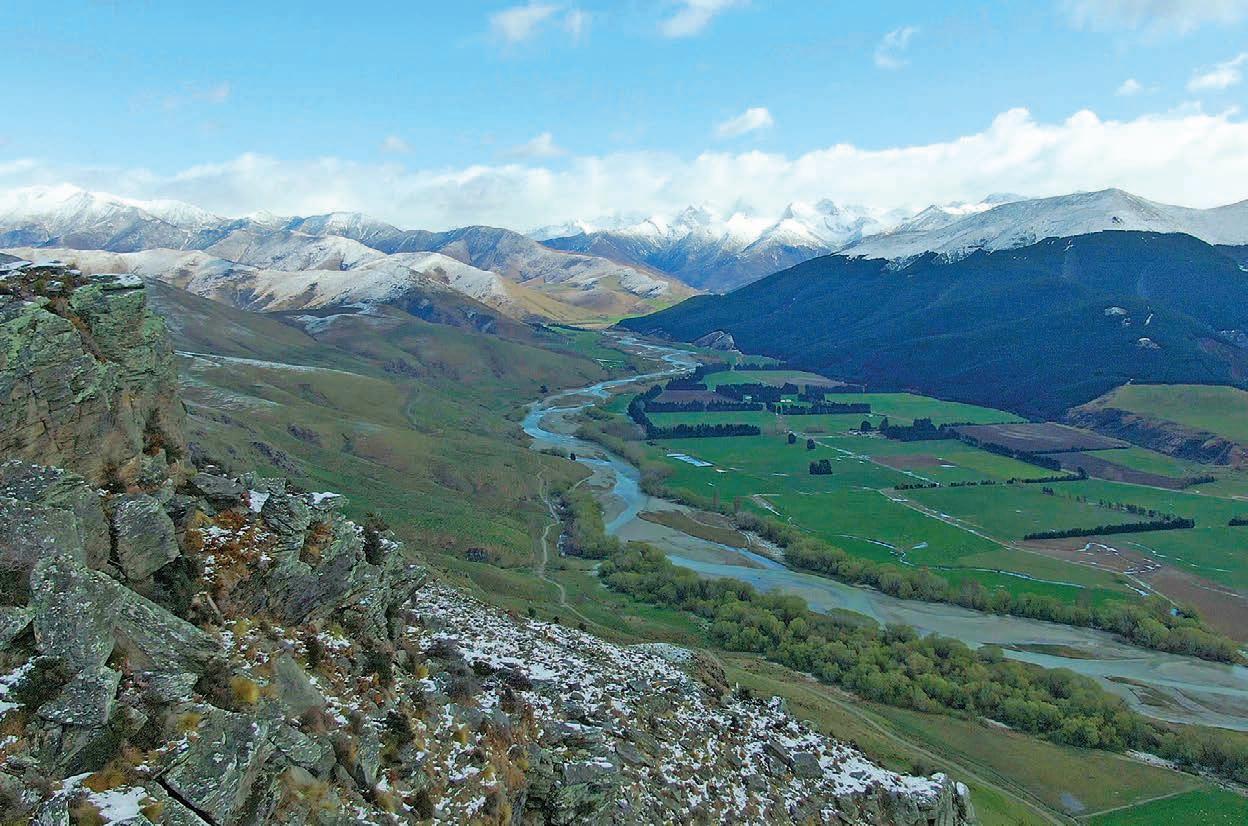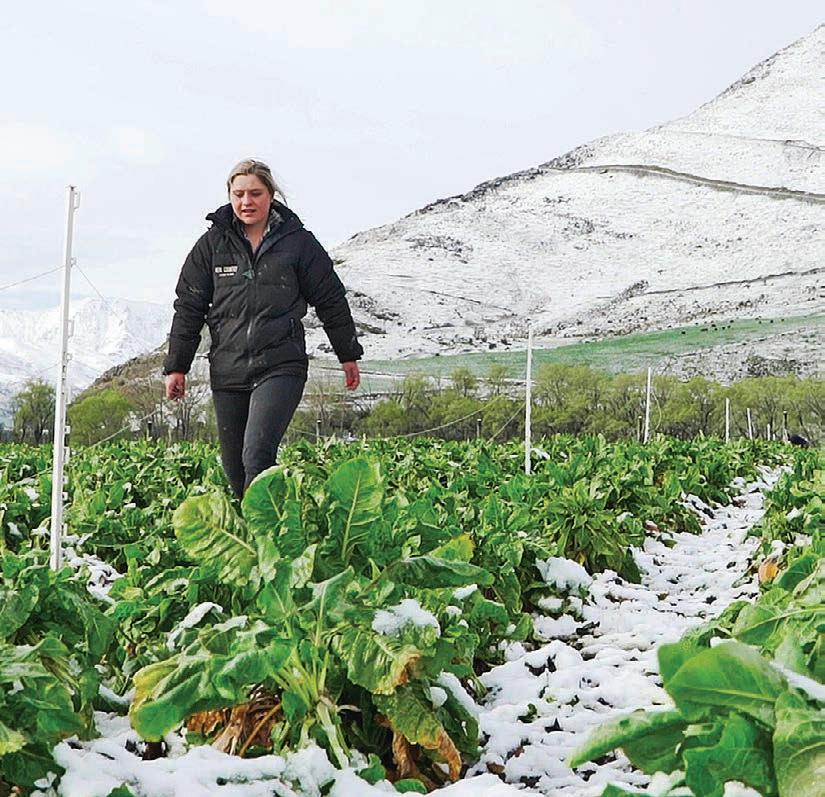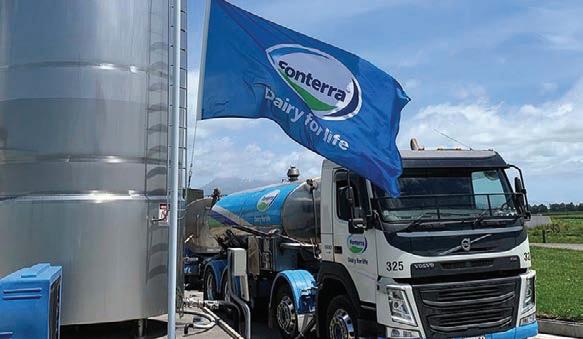
11 minute read
Opinion
Fonterra stabilises finances
The Braided Trail
Keith Woodford
FONTERRA has stabilised its finances with more asset sales forthcoming. It now operates a conservative model supported by its farmer members. But the model will not create the national champion that the Labour government has always hoped for.
Fonterra’s annual results announced on September 18, for the year ending July 31, indicate that it has made good progress in stabilising its financial position.
A key outcome is a reduction in interest-bearing debt by $1.1 billion, now down to $4.7bn. This has been brought about through asset sales and retained profits.
At the media conference held immediately after the release of the results, chief financial officer Marc Rivers said further debt reductions were desired.
The key measure that Fonterra is now using for debt is the multiple of debt to EBITDA, which now stands at three-point-four. The desired level in the newlyconservative Fonterra is between two-point-five and three.
It is the perceived need to pay down debt that has caused the dividend – the first for two-and-ahalf years – to be limited to 5c per share. This will be tax assessable in the hands of farmers and unit holders. The cost to Fonterra is about $80 million.
Fonterra has now reduced its stake in Beingmate from 18.8% to 9%. It expects to sell the remaining shares during the coming year.
Based on the current market price of ¥7.4 (Chinese Yuan), then this would bring in about $150m. However, the rules of the Shenzhen exchange say that Fonterra can only dribble these on to the market, so its members and unit holders will have to be patient.
Beingmate’s shares are now about 35% higher than a year ago, but still well less than half the price of ¥18 per share that Fonterra paid back in 2015.
Fonterra’s China Farms are still on the market and the value was marked down a further $63m earlier in the year. It seems that these farms are now performing better than in recent years, but operational matters remain challenging.
Livestock numbers decreased by 10% (6600 animals) during the year, which seems to be part of an untold story.
Fonterra has referred on occasions to animal husbandry matters on these farms, but has never been explicit that this is a euphemism for animal health. Nor has it been explicit as to the key health condition, which has affected both animals and staff to whom it transferred. Other Chinese dairy farms have had similar problems, largely kept away from the media.
The overall Chinese dairy industry is in expansion mode again, and this is illustrated by the substantial imports of live animals over the last year. In this environment, it might seem surprising that no one has put up their hand to buy the Fonterra farms.
Fonterra’s other big business that is on the market is its interest in DPA Brazil. That business appears to have improved somewhat over the last year, so perhaps that is a promising sign for a sale.
Fonterra’s two remaining big overseas businesses are in Chile and Australia. Their long-term role in the new Fonterra must surely be a matter of interest and conjecture.
Chile has been very hard hit over the last 12 months, first from civil unrest that erupted last October. I was there at the time, and the fires still burning across Santiago as we finally flew out were disturbing. The unrest has been tragic for a country that has made huge progress under 30 years of democracy.
Chile, like most of South America, has also been very hard hit by covid-19. It would not be surprising if Fonterra decided this was not a good time to sell, as buyers will be scarce.
The situation in Australia is similarly intriguing but for other reasons.
Australia’s milk production is now on the rebound as Australia itself rebounds from drought. However, Fonterra’s own milk supply is not increasing and appears to even be drifting downwards.
Chief executive Miles Hurrell was asked about Australia at the media conference and he replied that they were “very comfortable” with the milk supply situation. That suggests that the current declining market share is planned rather than unplanned.
Fonterra has acknowledged that it is no longer purchasing milk from third parties on account of the difficulty of marketing that milk profitably. This situation contrasts with last year, when Fonterra was desperately trying to purchase milk during the drought.
I cannot find any mention in the annual report as to whether active consideration was given to the value of Fonterra’s Australian assets. My own suspicion is that if these assets were offered for sale, they would not sell for the current values in Fonterra’s books.
Over the past year, when Fonterra’s directors have been asked by farmers about Australian values, they have used the 2017 sale price for Murray Goulburn as justification. However, Australia’s dairy industry is now very different to 2017.
Looking forward, my expectation is that Fonterra has ongoing prospects in relation to food service, with this depending very much on what happens in China. Food service is essentially ingredients which is Fonterra’s traditional strength.
In contrast, I see nothing very exciting happening in relation to consumer-branded goods. When
PROGRESS: Fonterra released its annual results on September 18, indicating that it has made good progress in stabilising its financial position.
history looks back over the past 19 years since its formation, it will record a zig-zag journey for its branded products, with Fonterra getting left behind while others marched forward.
The current strategic directions of Fonterra are focused on maximising milk returns to farmers. This is exactly what most farmers want, given farmers’ concerns about the financial stability of their own businesses. Most farmers would like to lower their debts. Accordingly, they don’t want Fonterra heading off into entrepreneurial endeavours.
This conservative philosophy is now firmly embedded within the board.
The strategic flip from entrepreneurial endeavours to conservatism occurred two years ago as a direct consequence of Fonterra’s dismal record overseas as it tried to move further along the value chain, particularly under the leadership of chief executive Theo Spierings and chair John Wilson.
The ‘management-speak’ within Fonterra acknowledges that the Spierings and Wilsonled team over-reached, although some of the danger signs were already looming well before that leadership team took over.
In this past year, Fonterra’s new capital spend was only $419m, and a similar spend is planned for the coming year. That may sound a lot when looked at in isolation, but it is puny in relation to Fonterra’s overall size.
One of the rules of business is that if you don’t spend enough on new capital projects, then eventually you go backwards.
A further indication of Fonterra’s strategic mindset is that it is removing the payment incentives to reduce peak production in the spring relative to total production. Fonterra’s argument is that it has enough processing plants in place and the spring peak is no longer forcing it to invest in more plants.
The unstated corollary to this is that removing the spring-capacity adjustment removes already small incentives for farmers to produce a flatter seasonal production curve that aligns more with consumer demand. It reinforces the evidence that Fonterra’s focus is towards commodities and ingredients with a long shelf life. To a large extent that means China.
Given the total mess that Fonterra made of its attempts to move closer to overseas consumers, it is hard to argue against much of what is now happening. However, the outstanding omission to face the future is the failure to engage meaningfully with the A2 issue.
Back in early 2018, Fonterra and the A2 Milk Company (ATM) announced that they would in future work together. It was an exciting announcement. However, the reality is that Fonterra signed a very bad agreement with ATM, which effectively took Fonterra out of the market as ATM’s potentially biggest competitor.
Nearly every major international competitor now has an A2 project. Given that New Zealand’s A2 status is superior to almost all other countries, Fonterra could have been and probably still could be the prime source of A2 ingredients. The key A2 patents have long since gone. It is now all about a ‘business to business’ ingredients brand and ability to supply.
I sometimes reflect back to a discussion with a Fonterra director back in 2008, where that director, with a smile on his face, told me that Fonterra could “take out” ATM whenever it wished. At the time, ATM had a capital value of less than $50m. It now stands at over $13bn, more than twice the capital value of Fonterra.
Your View
Keith Woodford was Professor of farm management and agribusiness at Lincoln University for 15 years to 2015. He is now principal consultant at AgriFood Systems. He can be contacted at kbwoodford@gmail.com
Breeding Profitable Sheep
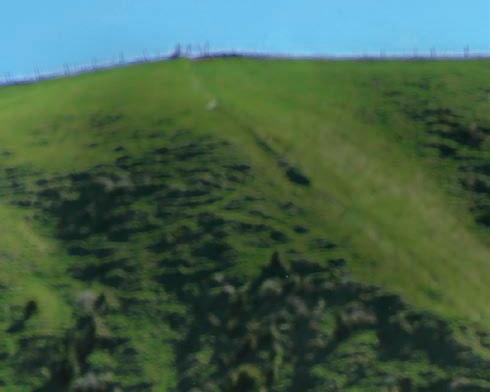
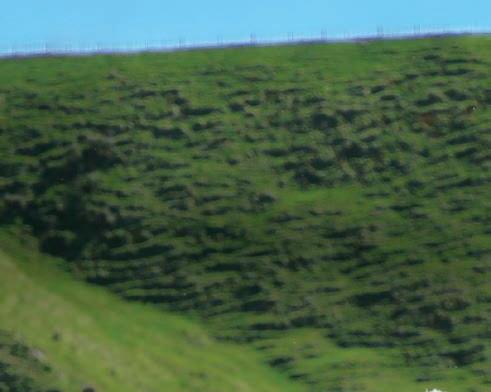
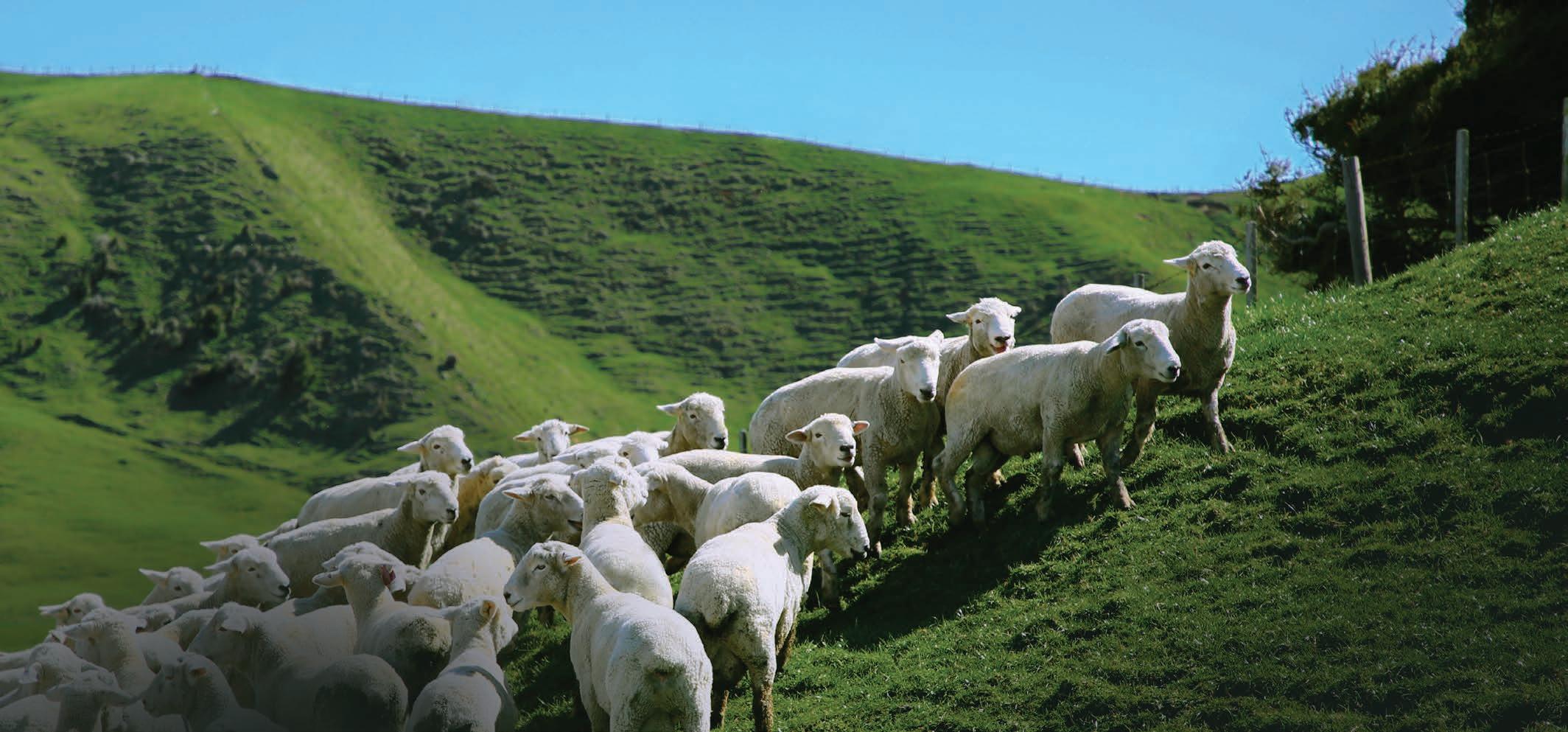
• Facial eczema testing for over 30 years, so all you need to focus on are the traits that make you money need to focus on are the traits that make you money • 2019 Sires average 2654 for New Zealand Maternal
Worth NZMW, top 10% • All hoggets mated. No Waimai Romney ewes drenched. WormFec Gold accredited drenched. WormFec Gold accredited
On-Farm Open Day —
Thursday 15 October, 10am – 4pm
ELITE RAM SALE
On-site 841 Waimai Valley Road Thursday 5 November, 1pm and also by private treaty
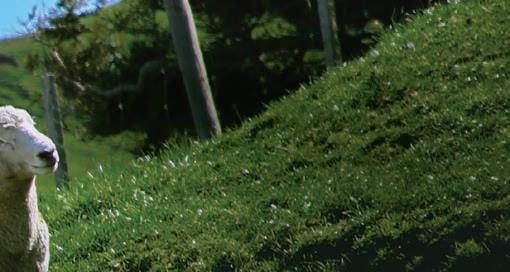



On Farm Story Passion for farming, women’s empowerment
Resilience is a liberally used term, but it certainly applies to Laura Douglas. The Southland woman has overcome her share of adversity but Neal Wallace discovers she refuses to let it deter her passion for agriculture and dream to share that passion with other women.
IT TOOK just five days for covid-19 to wipe out Laura Douglas’ tourist business.
The first cancellation phone call from a tour bus operator representing her primary source of income came on the last day of the Wanaka A&P Show in March.
Laura says that until that call, she was on a real high.
Forward projections for her farm-experience tourist and events business at Kingston in Northern Southland showed three years of hard graft was starting to pay dividends with profits forecast.
She was buoyed by interest in her stand at the Wanaka show and discussions were well advanced with a second tour bus company wanting to add the Real Country farm-taster experience to their schedule.
But that changed with the call from the Contiki tour bus company telling her the covid-19 virus meant they were cutting operations.
“I didn’t see that coming,”she said.
“I was having the time of my life at the Wanaka show and not at all pessimistic about the future.”
The pins were soon being pulled on corporate bookings at Real Country.
“One by one over the next few days, cancellations rolled in,” she said.
“It took five days for all six months’ income to be wiped out.”
RESILIENT: Laura Douglas poses with her dogs at Fairlight Station, Southland.
I want to remove every single barrier to women getting into the agricultural industry, including financial.
Douglas says she slipped into a dark hole, engulfed by the misguided view that because her business had failed, she too was a failure.
Life had previously thrown her some curve balls and while this latest one was an almost unplayable yorker, Douglas realised the way through was to keep pursuing her passion of farming and animals, and using those skills to teach young women.
Raised on a Northern Southland farm, Douglas has overcome depression and being ostracised by some of her peers for her love of hunting and farming, which never really fitted the female stereotype when at school, university or during her career in international finance.
“I should never, ever have put on those stilettos when I had a

corporate career, I should have worn gumboots,” she said.
Her rural roots have been a constant source of stability and inspiration.
In addition to hosting tourists, Douglas ran the Southern Girl Finishing School, using her experiences and farming knowledge to help young women build self-esteem.
The short courses are aimed at women from all walks of life and use skills such as changing tyres, shifting sheep, jump starting a tractor with a flat battery, fencing, shooting firearms and cracking a stock whip to build confidence.
“Females and males learn differently,” she said.
“Females need to feel comfortable and confident before doing something practical, something outside their comfort zone.”
But when covid-19 hit, Douglas’ focus was to find work to save Real Country in the hope the borders would reopen and tourists return.
That became a forlorn hope.
Support from her father John Douglas and journalist Sarah
